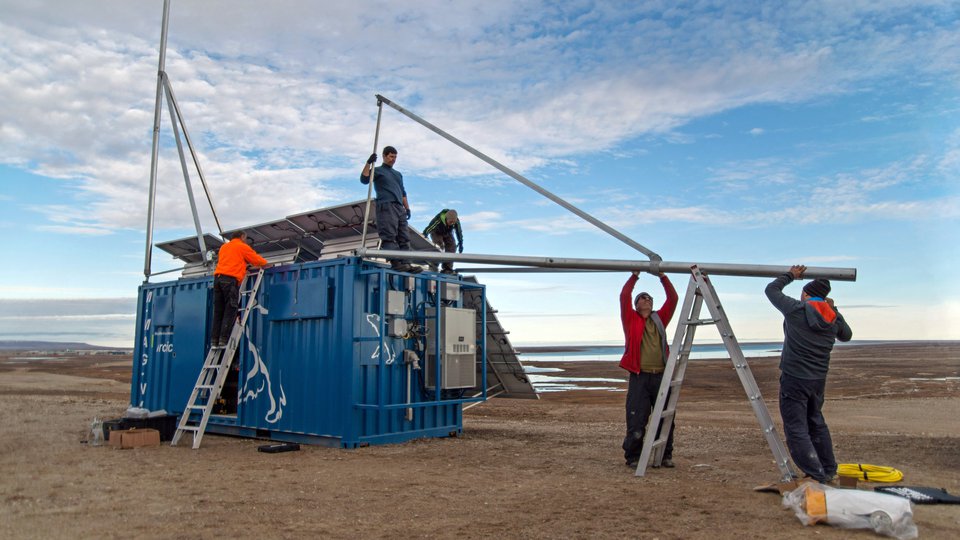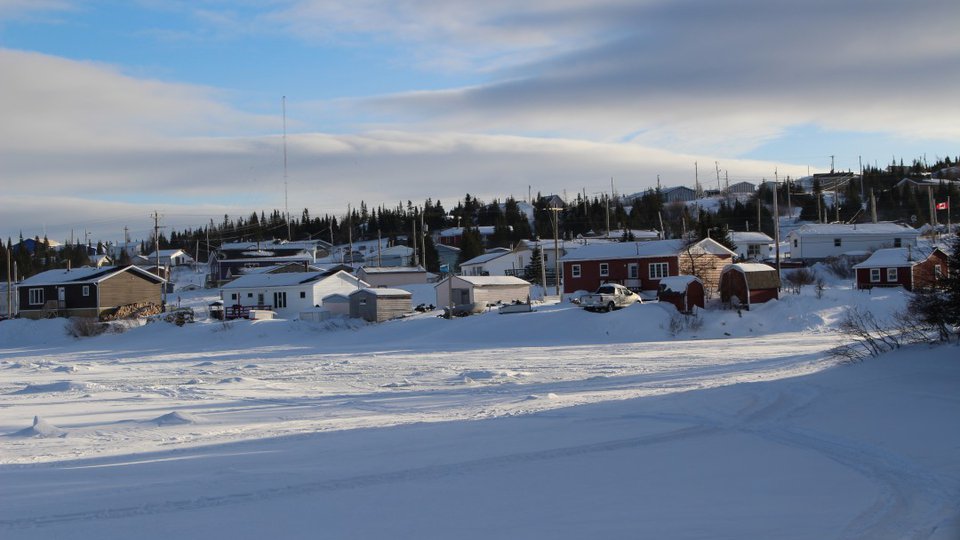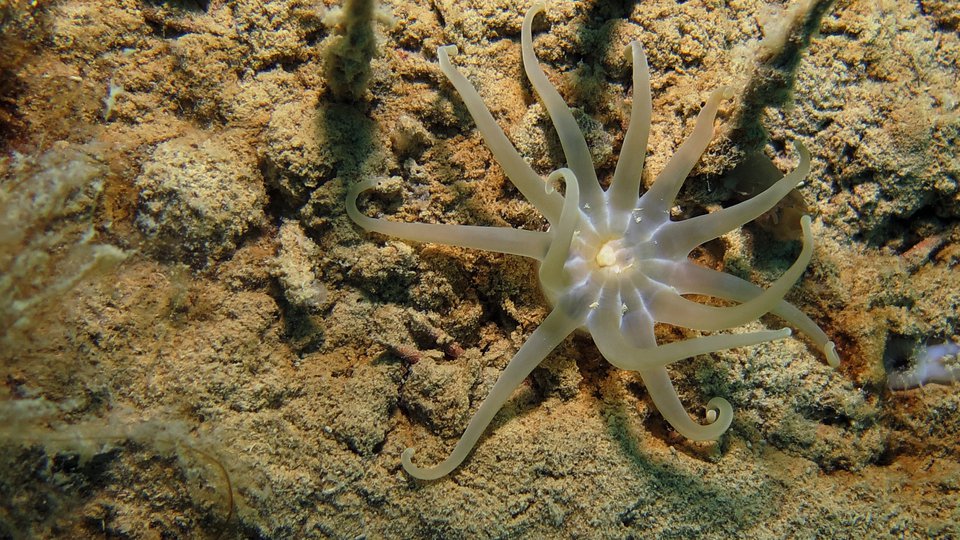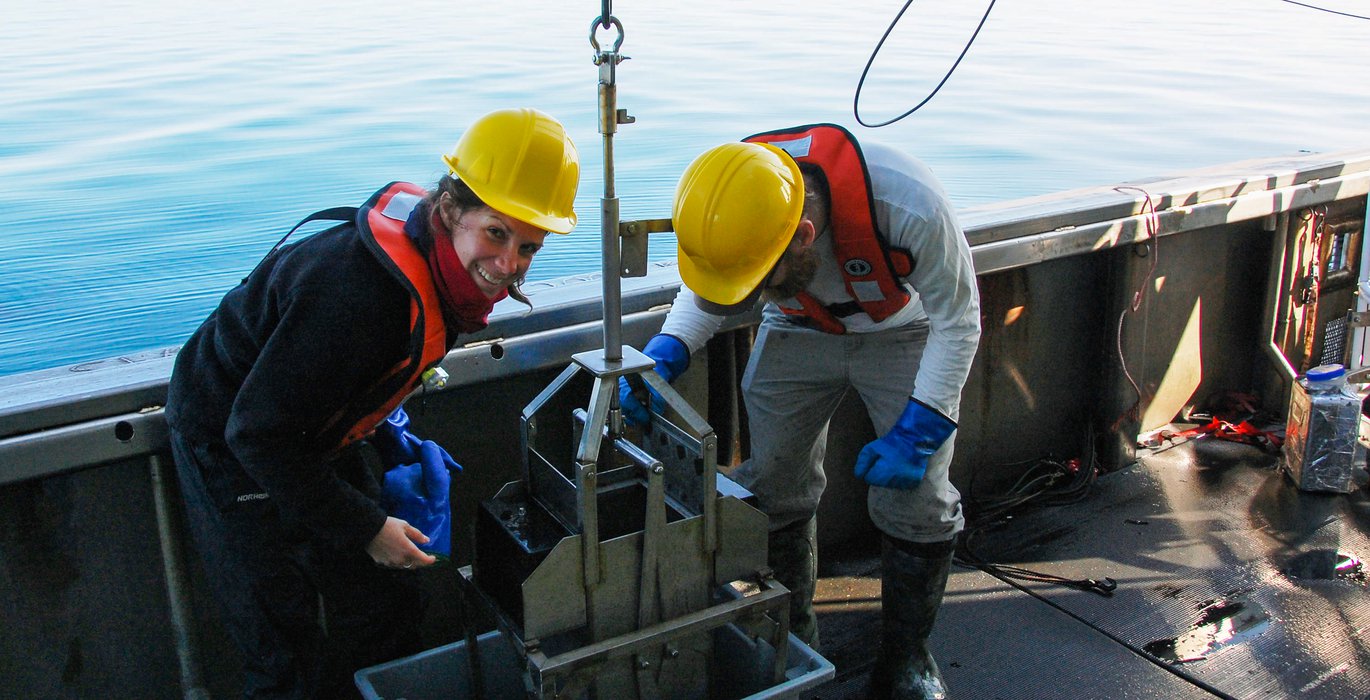
It is with a suitcase full of empty tubes and spatulas that I boarded the William Kennedy, ready to collect samples of mud that has accumulated on the seafloor around Southampton Island during the past millennia. As part of the Southampton Island Marine Ecosystem Project (SIMEP), we aim to reconstruct the long-term evolution of the system, including changes in sea ice, temperature and primary production in relation to climate fluctuations of the past. While collecting mud may seem trivial, it is quite challenging in northwestern Hudson Bay, where strong winds and a rocky seafloor complicate the task. This year, we were prepared to work hard to find the best areas where sediment had accumulated into a thick layer. The mud hunting was officially opened on August 4th when we traveled toward our first station!
After 9 days navigating around the southwest side of the Island and a few surface samples in the freezer that did not cover as far back in time as we were hoping, we woke up to a beautiful morning sunrise over a perfectly calm mirror sea surface, with high expectations for the day. Captain David was as excited as the rest of the crew to finally deploy what we named the “torpedo” corer. Our target site had shown unexpectedly high signs of algal production, which was very promising, and it turned out to be the site we had dreamed about during the past two years. We collected a good meter of soft light-brown sediment from which different geochemical, molecular and micropaleontological tracers will be studied at U. Manitoba and U. New Brunswick when we return back to the lab at the end of the month.
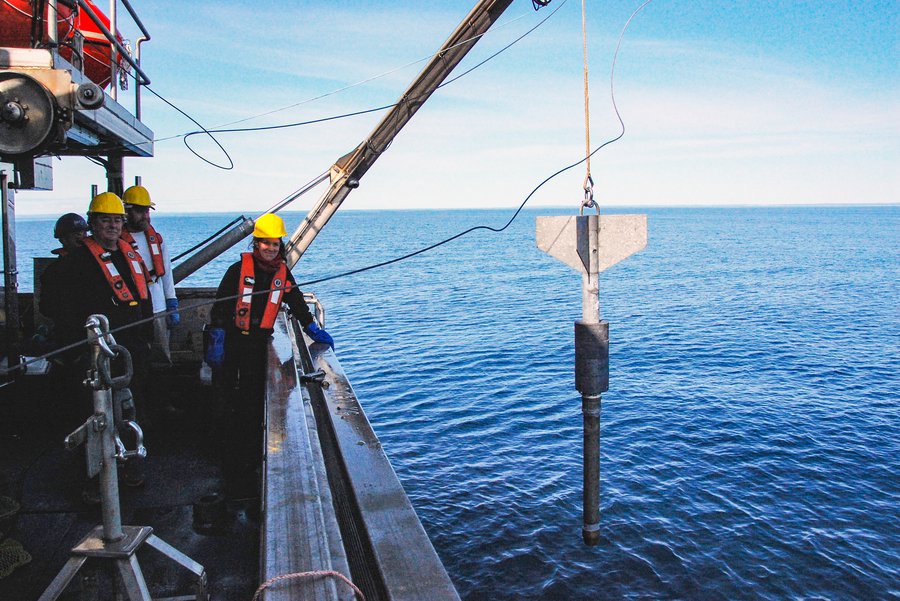
The gravity corer (“torpedo”) that allowed collecting a ca. 1m long sediment core. (Photo: Audrey Limoges)
Not only did the past years of work allow the collection of material and data from an under-explored area, it helped to build foundations for new research collaborations in an ecologically and culturally significant region of the Arctic that is rapidly changing. This scientific cruise has been so far very rewarding and fortunately, we can still hope for more interesting discoveries. Next stop: Frozen Strait. We are ready to start the second leg of the SIMEP campaign, and further the frontiers of our research along the northern side of the Island.
